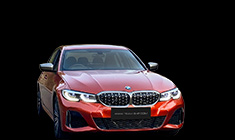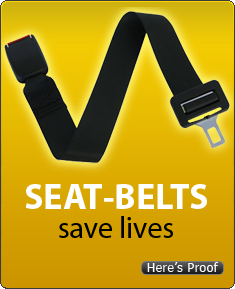News
Tips on how to ride a motorcycle in the rain safely
19th June 2022, 15:05 by Utkarsh Chaudhary
While behind a 4-wheeler, always follow the left/right wheel, never the vehicle's centre. Also, respect the momentum of trucks, buses & cars.
BHPian 1.2TSI7DSG shared this with other enthusiasts.
While we have an exhaustive list for driving safely in the rain for cars, can we create a similar checklist for bikes?
Here is a consolidated list below:
- Ensure that your bike is in a healthy condition; the tyres & brakes especially must be in top shape. Your tyres must have at least 2 - 3 mm of tread left and should be inflated to the manufacturer's recommended levels. Check Bulbs, Batteries & horns as well.
- Ensure that your bike has the mudguards, it is a menace for others, as much as it is for you.
- Riding on tires that are over or under-inflated can prove to be dangerous, even on dry tarmac. I have observed the air fellow at the petrol pump inflate rear tyres to 40-45 and front to 35 irrespective of the spec. Also, many bikes have different pressures for rider only & rider + pillion conditions. Try to be as close to the real conditions. For monsoon conditions, you can try to have a slightly lower pressure than recommended, say about 2 psi. It will improve traction.
- Ensure all your lights are active. While headlamps help with head-on visibility, we often miss out on the tail lamps for ensuring visibility from the rear. Keep all your lights on (except indicators) when riding in the rain.
- Please use low beams. High beams, esp LED ones are a menace in rains dazzling even to oncoming cars and rearview mirrors.
- Switch on headlamps immediately once it starts raining. With auto headlamp on, people miss out on switching on lights completely. Please ensure your taillights are on as well.
- Use indicators always. Even for changing lanes. It will help cars and other road users take care of you.
- The roads are slippery, ride slower, and avoid the edges of the road where the water accumulates. Also, try not to block traffic by driving slow in the middle lane.
- Get a good safety kit for yourself. Always (can't stress enough) wear a helmet in the rains even for very very very short rides. I learned the hard way by falling off on a 100 m ride from home to pick up breakfast.
- If one invests time and effort (not just money) in rainproof gear, we can remain unbothered by it.
- You can get a pin lock-ready visor on your helmet with an anti-fog insert for the visor. That will help you see clearly through your helmet visor without fogging. The pin-lock-ready visor and the insert cost a bit more but are worth it and a lifesaver. Use a clear visor during monsoon due to poor visibility. If you have a tinted visor please do change it for a clear visor for the period of rains.
- Wear reflective/bright rainwear/clothing. This aids visibility in showers.
- Buy a few strips of red reflecting stickers from any car accessory shop. Cut and stick a few pieces at the rear of your luggage box, rear mudguard, and even at the rear side of your helmet.
- Wear good grip shoes which will help you to run on wet surfaces. I have seen people lose balance when their shoes had no grip. Ladies- avoid heels while riding.
- Beware of the first shower after a long time since the roads will be slippery due to oil/grime and fallen fruits and leaves which when it gets wet, become slippery.
- While following a four-wheeler, always follow either the left or right wheel, never the vehicle's centre. This way you can avoid a nasty stone or pothole jumping at you from underneath that vehicle suddenly.
- Look out for puddles. Not only you don't see the road/potholes & you get dirty but it is highly possible that a car may splash an immense amount of water on you which may catch you off guard. Stay away from cars which are notorious for splashing (eg the Mighty Muscular Scorpio).
- Never ride on an unknown road that is filled with water and you can't see what is beneath the water, ride slow & with utmost care if it is absolutely necessary. You might end up in an open manhole.
- While taking shelter under bridges and similar structures, ensure you don't obstruct other traffic. I have seen people hounding for shelter under a foot overbridge right till the middle lanes. It is dangerous that someone might clip you and also you are choking the traffic flow.
- Blind spots! In the monsoons, cars, trucks and other commercial vehicles have absolutely no rearview. Take extreme caution before overtaking them because, in all probability, they can't see you! Honk and flash your headlights liberally.
- Avoid speeding on wet roads just to reach a shelter/home faster to avoid being wet.
- While passing through puddles, keep the speed slow & throttle steady and consistent. Look ahead where you want to go and not at the puddle. Do not lift your feet off your footpegs (many do that to avoid water), that might tend to put you off balance.
- Don't cut lanes as you do on the dry roads. I have seen people fall off in such circumstances.
- Remember while cars are kinder to you they are not gods, they also have inferior grips and brakes in the rains. Respect momentums of trucks, buses and cars.
- Don't ride in the wrong direction as you do in the dry to avoid U-turns and save distance/time. The extra mile will be definitely safer. Don't cut through dividers and unofficial turns.
- If you ever feel that you lost balance while riding, don’t try to hit the brakes hard. Panic braking can cause the bike to slip even before you realize it.
- Also, never hold on to your handlebar too tight. If the bike starts leaning towards the side, try to loosen up the grip instead of holding on to it in an attempt to steady the bike.
- If you want to slow down before a corner or even a relatively smaller curve, make sure to slow down and downshift well before you enter the curve, downshifting while you are taking the turn can cause the rear to spin out.
- Be extra careful around the traffic signals (especially where we wait for the signal to go green), you will often find more oil and similar lubricant residue there than on any other part of the road.
- Plan your routes properly and check the weather before leaving. It will save you from putting on rainwear in the middle of the road. In case the weather is fine, not wearing rainwear will save you from unnecessary discomfort.
- Always keep a waterproof bag/pouch under your seat which can be used to keep your wallet/mobile.
- Keep a set of spare clothes at your workplace. it will help you in case you get drenched.
- Find a good covered parking spot for the bike not in puddles. Try & park it on the main stands to help you kick start it if the weather is cold.
- Keep a cloth to wipe the bike seat & mirrors dry whenever you get out of the parking.
Check out BHPian comments for more insights and information.













.jpg)





